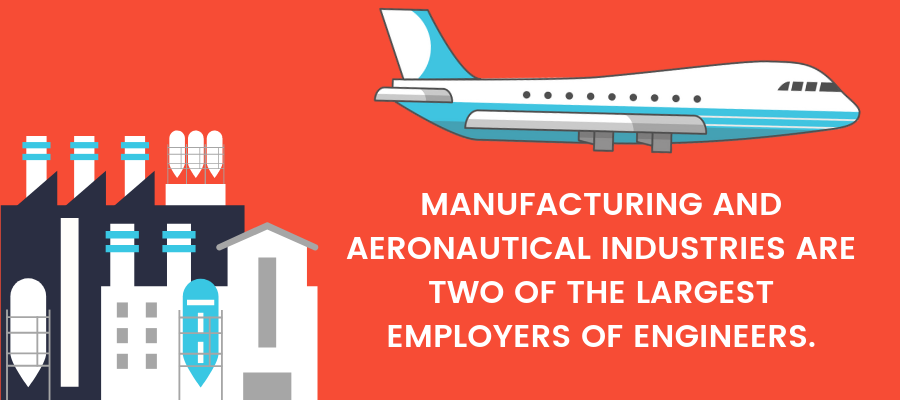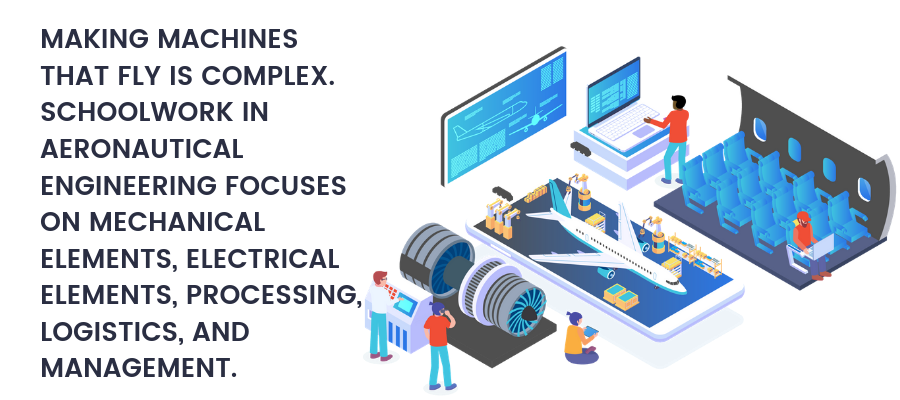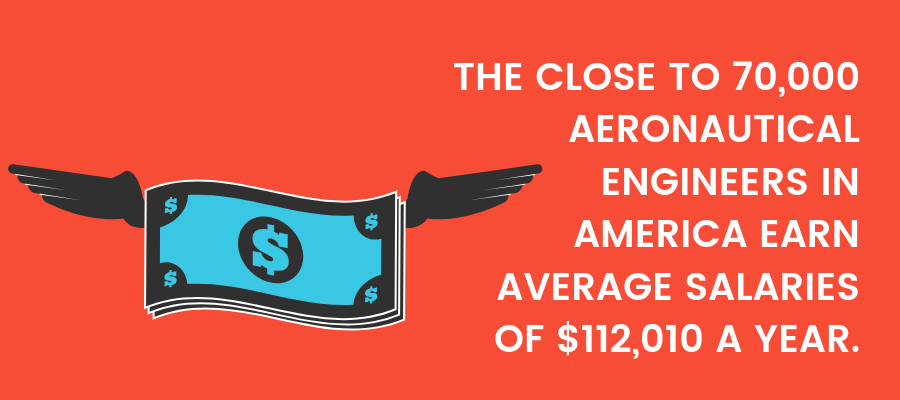![]() When you think of feats of engineering, you may think of impressive examples of architecture. In the ancient world, perhaps the Pyramids, of the Coliseum.
When you think of feats of engineering, you may think of impressive examples of architecture. In the ancient world, perhaps the Pyramids, of the Coliseum.
Likely one of the top few images that comes to mind, however, includes something that flies. Airplanes, helicopters, space shuttles and the like are some of the most superlative-worthy examples of humans working through the physical laws of the universe and using them to our advantage.
Just think, for most of human history a several hundred mile journey could take a week or more. Commuter flights of today can take you 500 miles in an hour.
The “space race” of today features mostly private players. But the average American relies on infrastructure in outer space for routine GPS-based services. Meanwhile private imaging firms snap high definition photos of most of the earth’s surface almost daily. Humans aren’t yet truly interplanetary, but our ability to escape the bounds of Earth’s atmosphere have radically changed our daily lives.
While there were undoubtedly many disciplines employed in our initial race to the skies (and beyond), aeronautical and manufacturing engineering play perhaps the largest roles in the aeronautics of today.
If you’re wondering what you can do with an aeronautics and manufacturing engineering degree, we’re here to employ our years of experience researching higher education degrees at DegreeQuery to jump to just that task.
See a specific question of interest? Jump below, or browse related questions we’ve answered including “what can I do with a degree in mechanical engineering?”
Table of Contents
- What Aeronautical and Manufacturing Degrees Are Available?
- Can I Pursue an Aeronautical and Manufacturing Engineering Degree Online?
- How Do I Gain Admissions to an Aeronautical and Manufacturing Degree Program?
- What Can I Do With an Aeronautical and Manufacturing Engineering Degree?
Don’t see what you’re looking for? Be sure to check out some of DegreeQuery’s related degree discernment content below:
- The Best Online Master’s in Aeronautical and Manufacturing Engineering Degrees
- What Can I Do With a Chemical Engineering Degree?
- What Can I Do With a Civil Engineering Degree?
- What Can I Do With a Mechanical Engineering Degree?
- What Can I Do With An Engineering Degree?
What Aeronautical and Manufacturing Degrees Are Available?

Aeronautical engineering degrees have traditionally been offered at the bachelor’s, master’s, and doctoral levels of study. Bachelor’s degrees are the traditional degree with which you may assume the title of engineer. And while you may be able to gain the title of aeronautical engineer with a mechanical or electrical engineering degree, the most straightforward way to gain employment in aeronautics is with an aeronautical engineering degree.
At the bachelor’s level, aeronautical engineering degrees begin as nearly all baccalaureate degrees do with general education requirements.
General education requirements may not relate directly to engineering. Their purpose, however, is to provide a strong basis in the basic skills that one who is college educated is expected to have. Namely, reading comprehension, logic, the ability to express oneself, quantitative understanding, some knowledge of a range of humanities and social science disciplines, and often a foreign language.
Once students have completed a large portion of their general education requirements, they will being coursework within their major.
Common major courses with a bachelor’s degree in aeronautical engineering include:
- Measurements and Instruments
- Circuits
- Analysis of Control Systems
- Physics I and II
- Calculus I-III
- Mechanics of Fluids
- Statics
- Mechanics of Materials
- Thermodynamics
- Dynamics of Gas
- Aerodynamics
- Science of Propulsion
- Designing Aircraft
- Dynamics of Flight
- Choice of Electives
As you can see, aerospace engineering bachelor’s degrees are quite a full bill! While of course depending on your skill set and what subjects you find “easier,” engineering degrees are often noted as some of the most difficult undergraduate degrees. With that said, bachelor’s in engineering degrees are essentially professional programs squeezed into a bachelor’s program.

At the master’s level students typically begin to specialize in one sub system of aeronautical engineering. While master’s degrees aren’t required to get your foot in the door with an engineering job, many aeronautical engineering teams have experts with graduate degrees.
Engineering degrees typically require 1.5-3 years for completion, depending on the pace at which you pursue the degree. There are a wide range of specializations that students may begin to endeavor upon through their years of master’s study. Some of the most common specialization areas include:
- Aerodynamics
- Aeroelasticity
- Composites analysis
- Avionics
- Propulsion
- Structures and materials
At the end of most master’s-level engineering degrees students must complete a thesis. A thesis is different from a dissertation, and typically involves a 100+ page survey of current research within your field of study.
We should also note that nearly all aeronautical engineers work on projects which together comprise programs. This means that as you progress through your career, many of your engineer co-workers will advance into project and program manager roles. As management and engineering outcomes are so heavily intertwined, there are also many master’s-level degrees centered around management and aeronautical engineering.

At the doctoral level students will typically choose between a doctor of philosophy (Ph.D.) degree and a doctor of engineer (D.Eng.) degree. While doctor of engineering degrees are professional degrees, and doctor of philosophy degrees are research degrees, there actually isn’t much of a difference between what is expected of you (or what you can expect of the degree).
Both Ph.D. in engineering and D.Eng. degrees typically require a dissertation. And both D.Eng. and Ph.D. degrees can be used to obtain a teaching position (as a professor) if you so choose. Dissertations are several hundred page documents of original research that — at least theoretically — should be of quality to gain entrance to a peer reviewed research publication.
At the doctoral level many students become highly specialized and perform original research in one aspect of aeronautical engineering. If you’re looking to become a true expert in one aspect of engineering, doctoral degrees can help you to gain access to funding for research as well as a community of equally specialized scholars.
Have additional questions about engineering degrees? DegreeQuery has covered a wide range of related degree coverage:
- How much Science is in an Environmental Engineering Degree?
- Is There Any Writing Required for a Degree in Engineering?
- What Are the Benefits of Pursuing a Degree in Civil Engineering?
- What Are the Benefits of Pursuing a Degree in Engineering?
- What Are the Benefits of Pursuing a Degree in Mechanical Engineering?
- What Are the Benefits of Pursuing a Degree in Petroleum Engineering?
- What Are the Benefits of Pursuing an Associate’s Degree in Engineering?
- What Are the Easiest Degrees to Get in Engineering Technology?
- What Are the Easiest Degrees to Get in Engineering?
- What are the Fastest Schools for a Master’s Degree in Environmental Engineering?
- What is a Bachelor’s Degree in Environmental Engineering?
- What is a Master’s Degree in Cyber Security Engineering?
- What Is the Benefit of a Biomedical Engineering Degree Vs a Medical Degree?
- What Is the Benefit of a Chemical Engineering Degree Vs a Chemistry Degree?
- What Is the Benefit of a Civil Engineering Degree Vs an Environmental Engineering Degree?
- What Is the Benefit of a Computer Hardware Engineering Degree Vs a Computer Programming Degree?
- What Is the Benefit of a Health and Safety Engineering Degree Vs an Occupational Health and Safety Degree?
- What Is the Benefit of a Mechanical Engineering Degree Vs a Materials Engineering Degree?
- What Is the Benefit of a Nuclear Engineering Degree Vs a Nuclear Physics Degree?
- What Is the Benefit of a Petroleum Engineering Degree Vs a Mining and Geological Engineering Degree?
- What Is the Benefit of an Aerospace Engineering Degree Vs an Astronomy Degree?
- What Is the Benefit of an Electrical Engineering Degree Vs a Computer Science Degree?
- What Is the Benefit of an Engineering Degree Vs a Science Degree?
- What Is the Benefit of an Engineering Degree Vs an Architecture Degree?
- What Is the Benefit of an Engineering Degree Vs an Engineering Technician Degree?
- What Is the Benefit of an Industrial Engineering Degree Vs a Supply Chain Management Degree?
- What is the Difference between a Degree in Environmental Science and Environmental Engineering?
- What is the Difference between Industrial Design and Design Engineering?
- What is the Difference in a Fire Science vs. Fire Protection Engineering Degree?
- What Is the Fastest School for a Bachelor’s Degree in Engineering?
- What Is the Fastest School for a Degree in Engineering Technology?
- What Is the Fastest School for a Doctoral Degree in Engineering?
- What Is the Fastest School for a Master’s Degree in Engineering?
Can I Pursue an Aeronautical and Manufacturing Engineering Degree Online?
In short, yes. Though the prevalence of online delivery for engineering degrees does vary depending on which degree you are considering.

Historically, many of the natural science courses required of bachelors-level engineering courses could not be taken remotely. Many of these courses require access to a lab. Today, more and more programs are offering online bachelor’s-level degrees in aeronautical engineering. Though not as many bachelor’s degrees are available online as engineering degrees at other levels.
Master’s degrees in engineering or engineering management are perhaps the most commonly found online engineering degrees. These degrees typically cater to experienced working professionals, and many of the basics that would require lab work are skipped over.
For a list of many of the top online master’s in aeronautical and manufacturing degrees, check out our ranking of degree programs here.
At the doctoral level, a handful of programs offer online engineering degrees, though many programs are at the very least hybrid (requiring some on-campus work).
Interested in comparing aeronautical and manufacturing engineering degrees to related engineering degrees? Check out our coverage of related degrees below:
- What Classes Will I Have to Take for a Degree in Aerospace Engineering?
- What Classes Will I Have to Take for a Degree in Agricultural Engineering?
- What Classes Will I Have to Take for a Degree in Biomedical Engineering?
- What Classes Will I Have to Take for a Degree in Chemical Engineering?
- What Classes Will I Have to Take for a Degree in Electrical Engineering?
- What Classes Will I Have to Take for a Degree in Electronics Engineering?
- What Classes Will I Have to Take for a Degree in Environmental Engineering?
- What Classes Will I Have to Take for a Degree in Materials Engineering?
- What Classes Will I Have to Take for a Degree in Mechanical Engineering?
- What Classes Will I Have to Take for a Degree in Nuclear Engineering?
- What Classes Will I Have to Take for a Degree in Petroleum Engineering?
How Do I Gain Admissions to an Aeronautical and Manufacturing Degree Program?

At the bachelor’s level, aeronautical engineering degree programs are entered similarly to any other bachelor’s-level degree. Admission to the undergraduate college will more often than not grant you admission to any major you choose to pursue. As aeronautical engineering is a highly technical field, there may be prerequisites. But these can often be gained just by choosing general education courses wisely.
Documents needed for admission to bachelor’s-level aeronautical engineering programs typically include:
- Transcripts
- Letters of Recommendation
- A Resume
- Standardized Test Scores
- Required Admissions Essays or a Statement of Purpose
- An Interview (for some schools)
At the master’s level, admissions standards will vary more. Typically students will elect, before hand, to pursue a terminal master’s or a master’s that is “en route” to a doctoral degree. For admissions to standalone master’s degree programs, students are typically required to take a GRE or GMAT. For en route master’s that lead to a doctoral degree, students will be required to obtain admission to the doctoral program before beginning their masters.
While master’s degree admissions are generally slightly more involved than undergraduate admissions, the following are typically required:
- Undergraduate transcripts
- A resume
- Letters of Recommendation
- A standardized graduate school admissions test
- Required essays
- An interview
Typically admissions to master’s level programs — particularly standalone terminal degrees — will weight your job experience more highly than school experiences. Though most all programs do vary.

As all main types of engineering doctoral degrees are research degrees, students should find a program mentor whose research interests align with the applicants. Furthermore, students should check with this potential mentor to ensure they are willing to work with them. While this isn’t a requirement for all programs, for many research heavy programs you must select a mentor (and they must agree to selecting you) before you can gain admission to the program.
What Can I Do With an Aeronautical and Manufacturing Engineering Degree?

Aeronautical engineers primarily work on projects that focus on designing, testing, research, construction, and improvement of aircraft. More specifically, engineers may work on projects that deal with one of the main specialization areas within aeronautical engineering.
The construction of aircraft is a huge endeavor, relying on many years of testing and a large body of research that supports the latest design choices. As some engineers like to joke, aeronautical engineering has about the lowest margin for error in designs, as just a small flaw can ground or unfortunately crash an aeronautical transport.
While your salary will undoubtedly vary based on experience level, education level, and the location of your employment, aeronautical engineers earn an average salary of $78,196. More senior engineers can make close to $150,000 with management making even more.
As with other vehicle types, aeronautical engineering relies on complex machines and processes to create airplanes and related devices. In short, some engineers focus on designing the devices that design engineers. These engineers are typically called manufacturing engineers.
Manufacturing engineers may also pursue a degree in aeronautical engineering, though they may also gain a job in an aeronautical firm with another degree type. Most commonly, electrical or mechanical engineering degrees may be used to gain a job as a manufacturing engineer.
Part logistics, part research, and sometimes crisis intervention, manufacturing engineers build the devices that build and test aircraft.

While salaries for manufacturing engineering roles vary based on location, experience, and education level, the average salary for this type of role is presently $78,277. Top earners may make almost double this and even more in management roles.
A third type of job that is commonly entered into after several years of working as an aeronautical engineer is that of project manager. Engineering firms were the birth place of many of the most nuanced management styles. Professionals that know agile or scrum engineering techniques are particularly in-demand. These management styles help to organize highly technically skilled teams into small “sprints” in which they incrementally build and improve upon an end product.
While project management roles will have different pay depending on whether you work in private or public organizations, the average salary is presently $134,433.
Didn’t see what you were looking for? Be sure to check out related engineering career content on DegreeQuery below:
- How Advanced Does My Degree in Aerospace Engineering Need to Be to Get a Good Job?
- How Advanced Does My Degree in Engineering Need to Be to Get a Good Job?
- How Advanced Does My Degree in Engineering Technology Need to Be to Get a Good Job?
- How Advanced Does My Degree in Environmental Engineering Need to Be to Get a Good Job?
- What Are the Fastest Growing Engineering Jobs?
- What Are the Highest Paying Jobs in Engineering Technology?
- What Are the Highest Paying Jobs in Engineering?
- What Are the Highest Paying Jobs With a Degree in Civil Engineering?
- What Are the Highest Paying Jobs With a Degree in Mechanical Engineering?
- What Are the Highest Paying Jobs with a Degree in Mining and Geological Engineering?
- What are the Highest Paying Jobs with a Degree in Petroleum Engineering?
- What Degree Do People With a Job in Computer Engineering Have?
- What Degree Do People With a Job in NASA Engineering Have?
- What Degree Do People With a Job in Usability Engineering Have?
- What Degree Do People With A Job in Web Operations Engineering Have?
- What Engineering Degrees See the Largest Wage Differences?
- What Industries Have the Greatest Demand for a Degree in Engineering?
- What Is the Demand for a Degree in Engineering Technology?
- What Is the Demand for a Degree in Engineering?
- What Is the Demand for a Graduate Degree in Engineering?
- What Is the Demand for an Associate’s Degree in Engineering?
- What Is the Demand for an Engineering Degree in the Field of Space Exploration?
- What Is the Job Outlook Like With an Engineering Degree?
